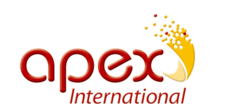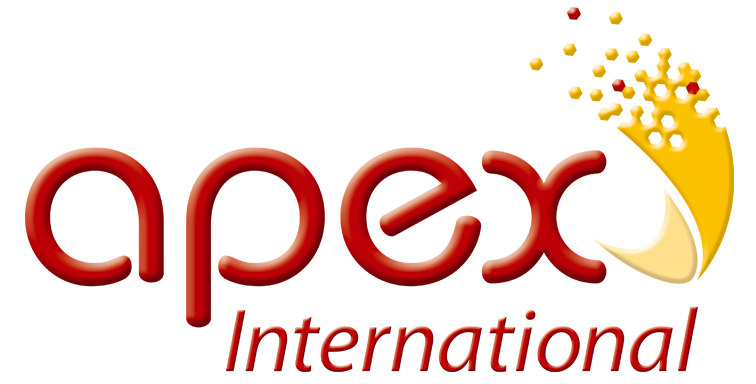
The Evolution of Print: From Conventional to Digital and Back Again
 The printing and packaging industry has seen a massive transformation over the past decade. In 2023, brand owners and retailers perceive packaging in a completely different way than they did in 2011. Globalization is slowing as brands prioritize local manufacturing with a lower carbon footprint. Eco-friendly production methods and sustainable product solutions are no longer optional; they are a requirement.
The printing and packaging industry has seen a massive transformation over the past decade. In 2023, brand owners and retailers perceive packaging in a completely different way than they did in 2011. Globalization is slowing as brands prioritize local manufacturing with a lower carbon footprint. Eco-friendly production methods and sustainable product solutions are no longer optional; they are a requirement.
At the heart of this evolution is GTT 2.0 and Expanded Color Gamut (ECG) printing, a technology that extends beyond CMYK to include additional colors such as orange, green, and violet (OGV). ECG offers greater color accuracy, improved efficiency, and sustainability benefits. Alongside this, embellishments have become a game-changer, redefining how consumers interact with printed packaging.
Why is ECG Printing the Future?
 Traditional printing methods often rely on spot colors, leading to higher ink consumption, increased waste, and complex color management. ECG eliminates the need for most spot colors, allowing printers to achieve a broader range of hues while standardizing the printing process. Some of the major benefits of ECG include:
Traditional printing methods often rely on spot colors, leading to higher ink consumption, increased waste, and complex color management. ECG eliminates the need for most spot colors, allowing printers to achieve a broader range of hues while standardizing the printing process. Some of the major benefits of ECG include:
-
-
Higher efficiency: Fewer press washes, shorter setup times, and a reduced need for multiple ink stations.
-
Sustainability: Less ink and substrate waste, making it an eco-friendly choice.
-
Cost reduction: Standardized processes and lower ink consumption lead to significant savings.
-
Increased production capacity: More colors can be printed in a single pass, improving press efficiency.
-
Note - ECG does not necessarily use all 7 colors. It may need only 4 depending on the design and color mix.
GTT 2.0 anilox engraving is renowned for its consistency and  accuracy, and many printers refer to it as the ECG Enabler. Without full control and repeatability in the print process, ECG simply is not possible. GTT 2.0 helps printers improve sustainability by ensuring optimal ink transfer, reducing doctor blade back-pressure, and eliminating over-inking issues - consistently, run after run.
accuracy, and many printers refer to it as the ECG Enabler. Without full control and repeatability in the print process, ECG simply is not possible. GTT 2.0 helps printers improve sustainability by ensuring optimal ink transfer, reducing doctor blade back-pressure, and eliminating over-inking issues - consistently, run after run.
Why is There a Need for Embellishments in the Digital Age?
 The rise in e-commerce has significantly transformed how consumers interact with packaging. In traditional retail settings, store layouts were designed to maximize physical touchpoints, guiding shoppers through aisles to encourage product interaction and impulse purchases. A customer who planned to spend $100 often left the store having spent $200, thanks to strategically placed items and unplanned buys along the way.
The rise in e-commerce has significantly transformed how consumers interact with packaging. In traditional retail settings, store layouts were designed to maximize physical touchpoints, guiding shoppers through aisles to encourage product interaction and impulse purchases. A customer who planned to spend $100 often left the store having spent $200, thanks to strategically placed items and unplanned buys along the way.
Today, customer touchpoints are significantly reduced to just a few moments:
- Receiving the package at the door in a bag or crate.
- Taking the item out of the bag and placing the product on the shelf or in storage.
- Unboxing and experiencing the packaging.
This shift means packaging must work harder to capture consumer attention. Embellishments such as tactile textures,  foils, varnishes, and hidden designs are now critical in creating memorable brand experiences.
foils, varnishes, and hidden designs are now critical in creating memorable brand experiences.
-
-
Tactile finishes (e.g., embossing, debossing, raised coatings) engage the sense of touch, encouraging the customer to look at the product when placing it in the cupboard which triggers repeat purchases.
-
Eye-catching foils and metallic inks enhance shelf appeal and create a premium feel.
-
Hidden images and interactive designs (such as augmented reality QR codes) transform unboxing into an experience.
-
Why Is Flexo Printing Reclaiming Market Share from Digital?
Despite the rise in digital printing, many companies are now returning to flexographic printing. A case study from Mexico revealed that companies initially shifted to digital for label production but later returned to flexo due to three major realizations:
- Lack of differentiation: Digital print quality and capabilities were identical across competitors.
- Cost challenges: Digital production costs remained high, making price competition difficult.
- Profitability concerns: The only way to lower the digital label costs was to reduce profit margins.
The resurgence of flexo printing is largely driven by advancements in efficiency, standardization, and the integration of value-added techniques such as Expanded Color Gamut (ECG) printing and embellishments. Looking ahead, the future of flexo will rely on its ability to leverage the growing brand acceptance of ECG color builds, originally popularized in digital printing, while further enhancing production efficiency and maximizing value-added capabilities. These include tactile varnishes, soft-touch coatings, and the ability to deliver striking gloss and matte finishes, all of which are uniquely achievable with modern flexo technology.
The Road Ahead: Embracing Innovation in Print
For the flexographic printing industry to remain competitive, collaboration between suppliers and printers is essential. The key strategies include:
-
-
Standardization & Consistency: Optimizing production by improving anilox transfer consistency, reducing anilox inventory, and using ECG for solid color builds.
-
Efficiency Enhancements: Increasing press up time from 35-40% to 80%, effectively doubling the printer’s production capacity.
-
Creative Exploration: Encouraging printers to embrace creativity with embellishments that drive brand engagement.
-
 Flexographic printers adopting GTT 2.0 anilox technology in combination with ECG printing, advanced screening techniques, and design embellishments can achieve a significant competitive advantage in today's evolving market. This integrated approach enhances print quality, sustainability, and cost-effectiveness, meeting the demands of both retail and e-commerce packaging.
Flexographic printers adopting GTT 2.0 anilox technology in combination with ECG printing, advanced screening techniques, and design embellishments can achieve a significant competitive advantage in today's evolving market. This integrated approach enhances print quality, sustainability, and cost-effectiveness, meeting the demands of both retail and e-commerce packaging.
GTT 2.0's innovative engraving ensures consistent ink transfer, reducing issues like dot gain and ink spitting, which are crucial for accurate color builds in ECG printing. This precision leads to sharper images and smoother ![]() gradients across various substrates. Additionally, by optimizing ink laydown, GTT 2.0 reduces ink consumption and waste, contributing to lower CO₂ emissions and enhanced sustainability efforts.
gradients across various substrates. Additionally, by optimizing ink laydown, GTT 2.0 reduces ink consumption and waste, contributing to lower CO₂ emissions and enhanced sustainability efforts.
Incorporating advanced screening technologies further refines print quality by eliminating moiré patterns and achieving smoother tints. When combined with design embellishments like foils and embossing, printers can produce packaging that captivates consumers in both retail and e-commerce environments.
By integrating GTT 2.0 technology with ECG printing and advanced design techniques, flexo printers can deliver sustainable, high-quality, and cost-effective packaging solutions, ultimately driving profitability and customer satisfaction.
Ready to see how GTT 2.0 and ECG printing can transform your packaging?
Contact us today to speak with one of our print experts.



